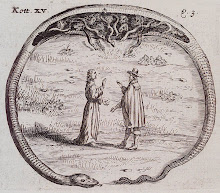I recently survived an avalanche of Tarjei Vesaas novels- four in succession; The Ice Palace, The Birds, Spring Night and The Boat in the Evening. (All of these are published by Peter Owen.) Such an immersion into his unique world has been thrilling to say the least. In fact I would suggest that out of all the obscurer authors I have read he probably deserves a wider readership than most. Vesaas’s style of prose is stark and terse yet eerily beautiful and illuminatingly attuned to nature and beyond, like the ever-changing labyrinth of ice in The Ice Palace. Such is the compression of feeling shaded into his spare writing, these short novels burn effervescently with a quiet intensity.
The Ice Palace is his masterpiece: a perfectly pitched tale of a nascent yet intense friendship between two young girls, Siss and Unn, in the Norwegian wilderness and a poetic flight into the aftermath of a tragic exploration of the mysterious ‘ice palace’ of the title. The inner-lives and secretive, forbidden feelings of the two girls are so brilliantly drawn that their ultimate separation is equally disturbing as it is heartbreaking. Similarly, Vesaas’s descriptions of the spectral but very real ice palace approach the visionary dreams of a mystic.
One of the key themes of The Ice Palace was the sheer mystery and incomprehensibility of the adult world as viewed from a child. A similar motif is to be found in The Birds, a story of Mattis, and adult with learning difficulties and his sister, Hege, who also serves as his carer. The novel deals with the private thoughts and fantasies of Mattis and his difficult engagements with both the natural world and other people. Indeed I would argue that it is the exploration of the nexus of these two common threads that is the defining characteristic of all of Vesaas’s work: how we live with and communicate with each other and how we engage with the natural world around us.
Spring Night again features a brother and sister duo, but in this instance they are both teenagers forced to cope alone when a strange family wresting in the midst of multiple traumas, some overt and others hidden, descend on them for a single night. The action unfolds almost like a play with an assortment of assembled characters all occupying different parts of the house and it is through the eyes of the brother, Olaf, who takes it upon himself to attend to each of them and learn their troubles, that the dramatic events are threaded together. Again the magical realm of the child’s imagination pools into the events like a sticky sap, yet in the end, Olaf and Sissel’s cultivated private universe will be punctured, perhaps forever, as daylight finally breaks.
When reading Vesaas I often think of the work of Andrei Tarkovsky, particularly in his focus on the elemental- fire, water, ice, wood, rock. Furthermore they both share a certain contemplative stillness of vision, an exploration of the transmogrifying properties of light and the people who pass through it. In his work, Tarkovsky notably investigated Aristotle’s dramatic unities, whereby all the action would occur in a single place in a single day. Spring Night is not only another fantastic example of this notion, but it is also an intensely unflinching portrait of a house simmering in the spring heat laden with intrigue and turmoil.
Finally, we have The Boat in the Evening, easily the most hermetic, mysterious and illusive of Vesaas’s books I have read so far. It is essentially a collection of sixteen visions in the form of prose poems. The first eight contain a definite narrative pulse and there is movement, a stirring of memory and of sensation. A drifter is seduced by the mirrored voices of a river and duly takes the plunge; two men meet at dusk to witness a ghostly phantasm fleet across the land; and a girl waits for a lover in the snow who never comes and instead finds solace in his messenger. At times, one is reminded of the Ted Hughes short-story collection, Difficulties of a Bridegroom, in its visionary marriage of the natural and the ethereal.
The second half of the book is far more abstract and difficult to grasp. Here we have ruminations on stone, the human heart, and the silent symphonies of remote places. The mood is gnomic, hermetic and one wonders if Vesaas’s poetic primitivism can be traced to a more pagan understanding of the earth? Certainly there are passages here that would not be out of place in an Ithell Colquhoun book.





Wonderful blog, lots of great stuff for the mystically inclined like myself to discover here. Im just checking out Tarjei Vesaas on Amazon now :)
ReplyDeleteHey- thanks a lot for the comments :) I just hope I can keep it updated...I heartily recommend Vesaas, particularly The Ice Palace and Spring Night...I'm going to try and hunt down other works of his in English.
ReplyDeleteThere is also a film version of The Ice Palace which I managed to get a burn of and it lookds great...